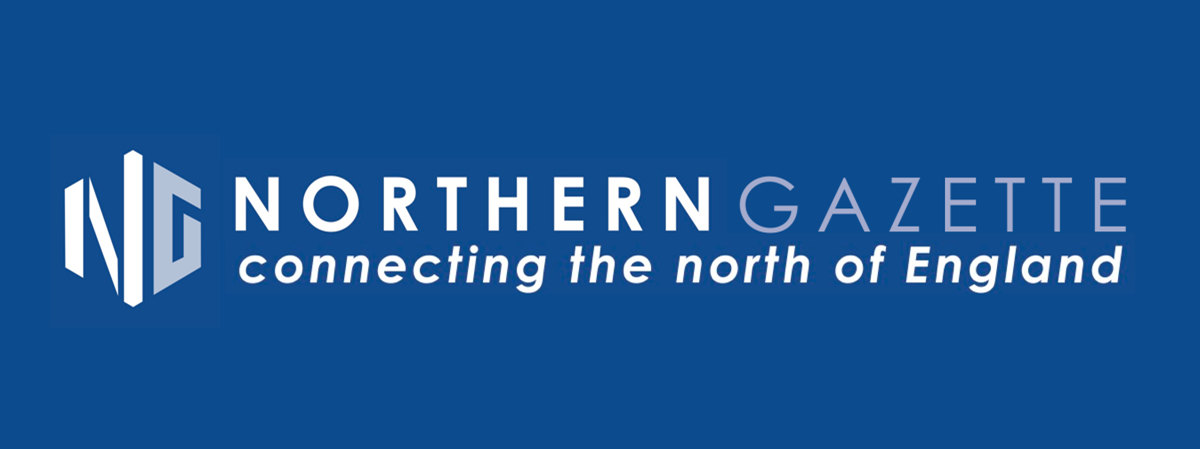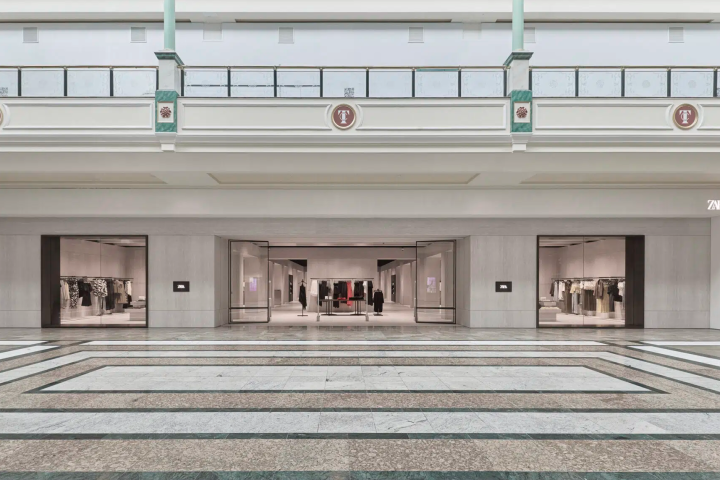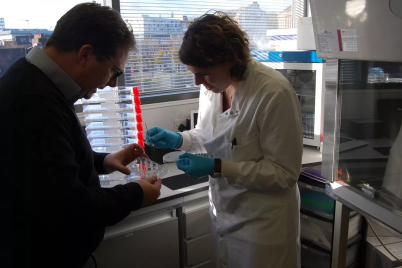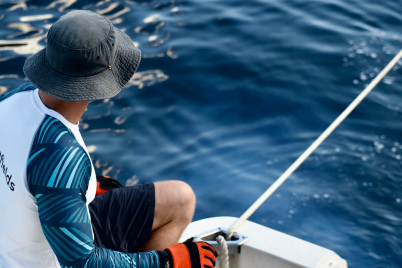Zara recently unveiled its news futuristic flagship store in Manchester’s Trafford Centre.
Spanning 32,291 sq ft which is roughly equivalent to two and a half Olympic swimming pools, this high-tech concept store ranks among the largest Zara locations in the country and showcases the brand’s newest global leading light design.
The overall concept combines fashion, architecture, sustainability, and advanced technology to deliver what the retailer describes as an “elevated shopping experience.”
In addition to the complete womenswear, menswear, kidswear, and fragrance collections, the store offers focused areas for special ranges, including Zara Origins and Zara Athleticz.
The Athleticz range is positioned by the front windows to draw attention from outside, while formal menswear, women’s shoes, and handbags are each displayed in smaller individual “boutique-style” sections.
The interior is arranged as a series of interconnected rooms, each with its own entrance, unified by a shared portico design.
This Trafford Centre flagship is the first in the UK to introduce Zara’s in-store automated clothes sorter. Staff feed garments into the system, which then organises and replenishes stock automatically. This is designed so that employees can spend more time assisting customers specific needs.
Other innovations include four assisted automated return stations, plus two extra automated drop-off points for online purchases. A new assisted service table supports side-by-side customer interaction and speeds up service, while multiple assisted checkout zones. This includes accessible payment points to better streamline transactions. By using Zara’s app or website, customers can check live stock levels, locate items, and arrange click-and-collect orders.
To optimise for sustainability the store includes features such as a cardboard collection point for recycling packaging from online orders, a used clothing donation container in partnership with a charity, and a repair booking service that complements Zara’s online pre-owned resale platform.
Zara said in a statement: “The reopening reinforces our commitment to retail innovation, offering customers a new destination where fashion, architecture, sustainability and advanced technology come together to create an elevated shopping experience.”
Zara was founded in 1975 by Amancio Ortega Gaona and Rosalía Mera Goyenechea, opening its first store in A Coruña, Spain, where the company remains headquartered. Originally named “Zorba” after the film Zorba the Greek, the brand changed to “Zara” after discovering a nearby bar with the same name. In its early years, Zara became known for selling affordable versions of high-end fashion, and in the 1980s it transformed its design, manufacturing, and distribution processes to quickly respond to emerging trends using advanced technology and collaborative design teams.
The brand’s international expansion began in 1985 with its first overseas store in Porto, Portugal, followed by entries into the US in 1989 and France in 1990. Throughout the 1990s and 2000s, Zara rapidly grew across Europe, the Americas, Asia, Africa, and Australia, establishing a presence in markets such as Japan, China, Brazil, South Korea, and South Africa. In 2010, the company launched its online store, gradually extending e-commerce services worldwide, including to the US, Canada, India, Israel, and Brazil.
By the mid-2010s, Zara was recognised among the world’s top global brands and continued adapting its business model, updating its logo in 2019 and strategically managing store numbers. However, it withdrew from certain markets, leaving Venezuela in 2021 and Russia in 2023. As of January 2023, Zara operates nearly 3,000 stores across 96 countries, including dedicated Zara Kids and Zara Home locations, and remains one of the world’s largest and most influential fashion retailers.








